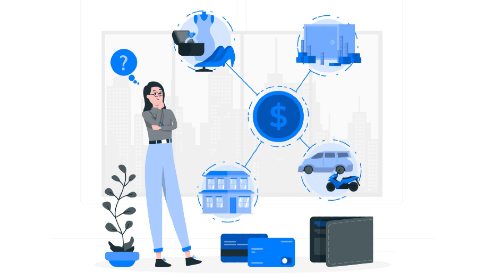Guide on Removing Duplicate Content from Google Search Results in 2024
In the vast landscape of the internet, originality is like a breath of fresh air for your content. Crafting unique material not only sets you apart but also speaks volumes to search engines like Google. They adore originality, and when you provide it, they’re more likely to give your content the spotlight it deserves.
Google’s algorithms are like ever-evolving wizards, constantly learning and adapting. Staying ahead in the SEO game requires understanding these updates. From Panda to BERT, each algorithm tweak aims to refine search results and reward original, high-quality content.
Understanding Duplicate Content

Duplicate content isn’t just copying and pasting. It can be as subtle as having the same content accessible through different URLs. Whether it’s identical text, images, or even metadata, Google sees it as duplication. Recognizing the various forms helps in addressing and eliminating these issues.
Accidental duplication is more common than you think. CMS issues, printer-friendly pages, or even session IDs can generate identical content. Awareness of these common culprits is the first step toward a cleaner, more original website.
Spotting duplicates requires a keen eye. Regularly using tools like Google Search Console or third-party software can help. Analyzing similarity ratios, checking meta tags, and monitoring crawl errors are essential steps in identifying and resolving duplicate content issues.
Consequences of Duplicate Content
1. SEO Ranking Penalties
Google, being the traffic cop of the internet, doesn’t take kindly to identical content floating around. The consequence? Penalties that can tank your website’s ranking. Picture this: you put in the effort to climb up the search results ladder, but duplicating content is like slipping on a banana peel – it sends you sliding down.
2. User Experience and Engagement
Duplicate content not only confuses search engines but also frustrates your audience. Imagine your users clicking on a promising link only to find the same old content. It’s like serving them a reheated dinner; they wanted something fresh and got the opposite. That frustration translates into a poor user experience, impacting engagement and potentially driving visitors away.
3. Legal Implications
Copying content without permission can land you in hot water. It’s not just about SEO or user experience; it’s about intellectual property. Accusations of plagiarism and legal action are real risks. Protect your website and your reputation by steering clear of duplicate content pitfalls.
Google’s Approach to Duplicate Content
1. How Google Detects Duplicate Content
Ever wonder how Google’s algorithms sniff out duplicates? It’s like a digital detective on the case. These algorithms compare content across the web, looking for similarities and patterns. They analyze text, images, and even metadata to separate the originals from the copies.
2. Google’s Panda Algorithm and Its Role
Meet Google’s Panda – not the cuddly type. Panda is all about content quality. Rolled out to ensure that low-quality content doesn’t hog the limelight, Panda penalizes websites with duplicate, thin, or irrelevant content. It’s like the gatekeeper ensuring only the good stuff gets through.
3. Other Algorithmic Measures in Place
Google’s not a one-trick pony. Beyond Panda, other algorithms like BERT focus on understanding context and user intent. Collectively, these measures form a digital shield against duplicate content, reinforcing the importance of delivering unique, valuable content to users.
Practical Strategies for Removing Duplicate Content
1. Conducting a Content Audit
Before we jump into the nitty-gritty, let’s talk about the first step in decluttering your digital space: the content audit. It’s like spring cleaning for your website. But how do you go about it?
- Tools for Content Audits
There’s no need to break a sweat; there are tools to help. Platforms like Screaming Frog and Sitebulb can crawl through your content, highlighting areas of duplication. They make the audit process a breeze, revealing the hidden corners where duplicate content might be lurking.
- Analyzing Similarity Ratios
Now, let’s put on our detective hats. Analyzing similarity ratios is like examining fingerprints – each piece of content has a unique identity. Tools like Copyscape can help identify matching content across the web, ensuring your material stands out in the vast online landscape.
2. Implementing Canonical Tags
Canonical tags are your website’s superheroes, guiding search engines to the preferred version of your content. But first, let’s get to know them.
- Understanding Canonicalization
Think of canonicalization as your content’s GPS. It helps search engines understand which version of a page is the original, preventing confusion caused by similar or duplicate content.
- Proper Implementation Techniques
Implementing canonical tags is as easy as pie. Web developers can insert these tags into the HTML of your pages, signaling to search engines the preferred URL. It’s like giving directions to ensure your content takes the right path to SEO success.
3. 301 Redirects and URL Consolidation
Let’s talk about streamlining – 301 redirects and URL consolidation are your virtual Marie Kondo.
- Redirect Best Practices
When you need to move content around, 301 redirects are your best friends. They tell search engines that the content has a new home, preventing users from encountering dead ends. It’s like leaving breadcrumbs so both users and search engines can easily find their way.
- Consolidating Similar Content
URL consolidation is the minimalist approach. If you have multiple URLs with similar content, consider merging them into one. It’s like combining puzzle pieces to create a complete picture, streamlining your website for both users and search engines.
4. Unique Meta Tags and Descriptions
Now, let’s add the finishing touches – unique meta tags and descriptions. They are the window displays of your content.
- Optimizing Metadata for Uniqueness
Each page on your website is unique, and your metadata should reflect that. Crafting individualized meta tags and descriptions is like tailoring a suit – it fits perfectly, showcasing your content in the best light.
- Importance of Descriptive Tags
Think of meta tags and descriptions as your content’s introduction to the world. They provide a sneak peek, enticing users and search engines alike. So, make them catchy, descriptive, and, most importantly, unique.
Tools for Duplicate Content Detection and Removal
- Google Search Console. Google Search Console is your go-to dashboard for insights. It’s like the control center for your website’s health. Dive into the “Coverage” and “Enhancements” sections to spot and fix duplicate content issues.
- Third-Party Tools and Software. Expand your arsenal with third-party tools. Tools like SEMrush and Ahrefs offer comprehensive solutions for identifying and resolving duplicate content. It’s like having a Swiss Army knife for your SEO needs.
- Manual Search Techniques. Don’t underestimate the power of manual checks. Sometimes, a simple Google search using unique snippets of your content can reveal potential duplicates. It’s like putting on your detective hat again, ensuring no digital twin goes unnoticed.
Mavlers has helped businesses get rid of duplicate content and optimize their pages to get to the top of the search results. Their teams work like an extended team for your already existing marketing team. Most of the information shared above is from the insights of the experts who have worked on past and recent projects on organic growth and website optimization.
Key Takeaways
The path to success involves a holistic approach – from understanding the consequences of duplicate content to implementing practical strategies and future-proofing your content strategy. It’s a journey of continuous improvement, adaptation, and commitment to providing valuable content. So, gear up, stay informed, and let your content shine in the ever-evolving digital landscape.




Leave a Reply